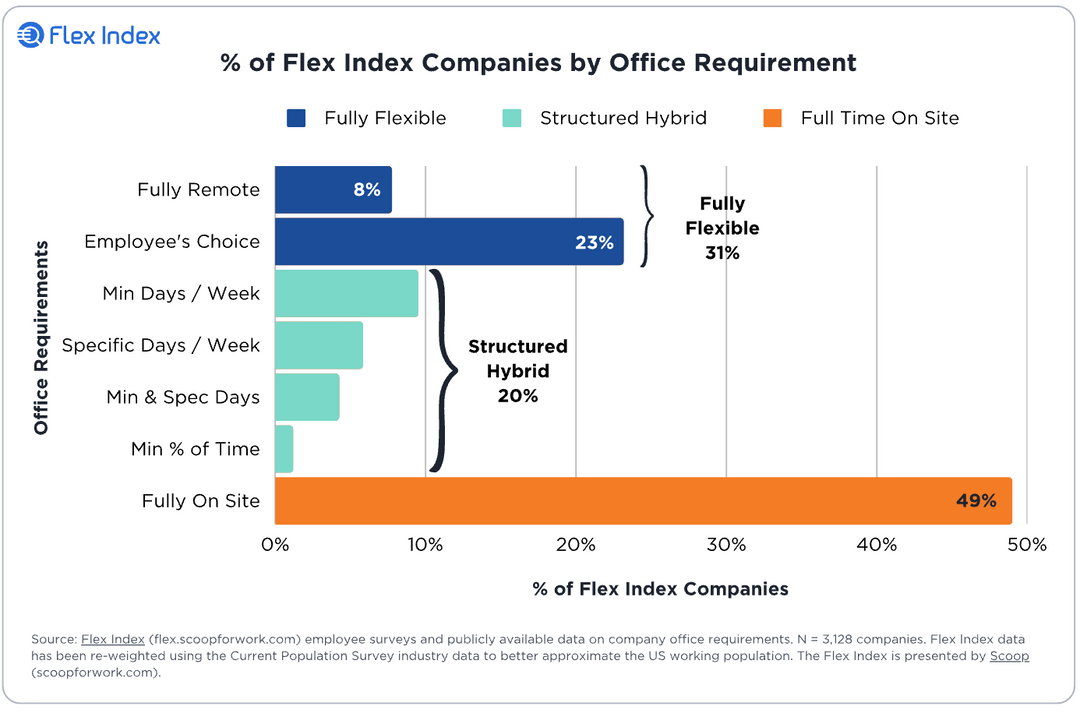Introduction
Up to 20 percent of the global population is neurodivergent. That means they perceive and interact with the world differently than the neurotypical majority, and have one or more neurological differences that may include ADHD, Autism Spectrum Disorder, Dyslexia, Dyspraxia, and others.
That’s one in five people.
Double the number of people who are lefthanded.i
Twenty times the number of people who have red hair, by some estimates.ii
In other words, not rare at all.
Whether acknowledged or not, neurodiversity is likely to be present at nearly every company, across a full spectrum of roles and industries. While there has recently been a remarkable global paradigm shift around acceptance of mental health issues, neurodiversity remains deeply stigmatized—particularly in the workplace. Research published in the Harvard Business Review indicates that unemployment rates run as high as 80% for neurodivergent individuals—many times higher than the overall population.
Alludo, the global technology company helping people live better and work better, embarked on an ambitious research project to gauge the current state of neurodiversity in the workplace. Alludo surveyed and interviewed nearly 1,000 neurodivergent individuals from several countries about their experiences, what they bring to the table, and the obstacles they face.
Key takeaway
Neurodivergent individuals offer a wealth of unrecognized, underappreciated characteristics and capabilities that deliver a competitive advantage for organizations of all sizes across all industries. This is about inclusivity, but it’s more than that.
As companies around the world scramble to fill vacant spots with top talent, Alludo believes it’s essential that leaders actively break down this stigma and lean into neurodiversity. The very human ability to think differently and approach complex problems with new cognitive frameworks will be of increasing value as a complement to the growing dominance of AI in the business landscape.
Survey framework
This survey comes as the world reckons with a permanent shift toward remote and hybrid models for an unprecedented percentage of knowledge workers. There’s also a burgeoning movement toward moving beyond flexibility in where you work and truly embracing freedom in when and how you work. Alludo views this comprehensive sense of freedom as the future of work, and has coined the term Work3 to describe it.
As part of this survey, Alludo set out to determine how elements of Work3 may influence the experiences of neurodivergent knowledge workers. What does a neurodivergence-friendly workplace look like? Does the option for remote work make a difference? Do neurodivergent workers feel comfortable disclosing their neurodivergence to HR, their manager, and/or colleagues?
What does Work3 really mean?
Embracing Work3 means dismantling generations of notions about what work ‘should’ look and feel like. Work 1.0 is the traditional, in-office, 9-5 model where people show up, tick boxes, and leave. Ushered in by the pandemic, Work 2.0 embraces digital transformation as well as a significantly higher prevalence of remote and hybrid workplaces. However, Work 2.0 largely carried the expectations of Work 1.0 into a different workplace model. Simply working remote doesn’t mean freedom at work, as evidenced by the growing trend of high-tech monitoring devices to keep tabs on remote workers. A true, Work3-centered environment means being able to show up as you are, embracing your unique skills and differences, and working in the way that suits you best.

What are we missing?
If Work3 becomes the true future of work, there are implications for all knowledge workers. This survey specifically set out to explore the intersection of Work3 and neurodiversity.
What are we missing about neurodiversity in the workplace? And can Work3 move us forward? That’s what we explore here. The responses are eye-opening.
Key takeaways
Set up to fail
The survey is clear: The contemporary workplace is set up for the neurotypical majority, and neurodivergence is not only stigmatized but is a source of alienation and frustration for many people who feel they’re being measured against the wrong stick and set up to fail. By not creating space and psychological safety for neurodiversity, employers are leaving an enormous amount of potential on the table.
The importance of true freedom
According to the survey results, neurodivergent workers clearly prefer true freedom and flexibility at work—not simply the option to work remotely, which is a standout preference, but also the ability to work in the style that suits them best.
The high cost of exclusion
For employers, the stakes are high. Not only is stigmatizing neurodiversity leaving top talent untapped, but neurodivergent employees report willingness to change their jobs to find a workplace that supports their needs.
Why this matters now
Work isn’t working
Even though the “Great Recession” headlines have faded, recent job growth and historically low unemployment rates mean that employees have more options—and they’re willing to walk away if they don’t get what they want. Meanwhile, employers are concerned about economic volatility and inflation, so they’re looking for ways to fill spots while preserving the bottom line.
Filling roles isn’t the only factor. Across the board, work isn’t working. As indicated above, the current work landscape hasn’t shifted away from Work 1.0 nearly as much as the headlines might suggest. There’s much talk about the global remote workplace, but the Q1 2023 Flex Report by Scoop reveals that a whopping 49% of US companies currently require full-time in-office work. Another 20% offer a hybrid workplace but dictate one or more elements of the structure, e.g., minimum hours, number of days, or specific day(s) someone must be in the office. That leaves less than one-third of US companies that allow either fully remote structures or a structure that is entirely up to the employee.
In other words, to borrow from Mark Twain, rumors of a remote work landscape have been greatly exaggerated.

Cubed in
During the pandemic, most knowledge workers got a taste of remote work—and survey after survey found that people prefer remote work overall. Now, companies are forcing people back into the office. The pretense is often that leaders are worried about workers’ ability to remain productive when remote, but for many workers, the opposite is true. That’s particularly evident among neurodivergent workers who, according to the survey, overwhelmingly prefer a 100% remote environment.
Why does remote work better for so many neurodivergent workers? Alludo’s survey revealed myriad reasons. Among them: remote work cuts down on the inherent distractions of an office environment. Remote work gives people better control over their environments, allowing them to set up a space with the elements (lighting, seating, layout, supplies, temperature, sounds, etc.) that support their needs.
Several respondents cited the need to “mask” in an in-office environment. In the case of neurodivergence, masking is the practice of camouflaging certain traits and tendencies in order to appear neurotypical. It’s a form of social survival and, for neurodivergent knowledge workers, professional survival. One respondent says, “I mask all the time, and it’s exhausting.” They’re not alone. Echoing this sentiment, another reports that “It’s incredibly frustrating and exhausting when you’re expected to mask 8 hours a day at a typical job setting.”
Neurodiversity is diversity
The recent momentum around Diversity, Equity, Inclusion, and Belonging (DEIB) is essential for growth in the workplace—and long overdue. But even within organizations that have improved cultural representation in their ranks, one dimension remains chronically overlooked and under-valued: neurodiversity. Let’s be clear: neurodiversity is diversity, and neurodivergent individuals deserve to be part of the conversation.
Creating safe, inclusive spaces for underrepresented groups—including neurodivergent individuals—is not only the right thing to do; it’s smart business. You don’t have to take our word for it:
It's not enough to expand talent pools and pipelines to ramp up hiring of neurodivergent individuals, though that’s a start. Leaning into neurodiversity means cultivating an environment that’s not one-size-fits-all and exclusionary. When in an environment where they can thrive—which looks different for everyone—neurodivergent individuals offer a wealth of strengths and abilities that allow them to make exciting discoveries and challenge the status quo.
Innovative thinking is more essential than ever
As artificial intelligence (AI) grows in sophistication and prevalence, many knowledge workers are wondering what it means for their roles. There’s a lot of apprehension, but we’d argue that there’s also a lot of potential. AI has the capacity to take on the routine, mundane, repeatable tasks that eat up a lot of knowledge workers’ time. Instead of fighting against AI, knowledge workers can work with AI, letting machines do the tedious lifting while humans are freed up to think creatively and in ways that only humans can.
Rather than cannibalize the work of innovative thinkers, AI can complement their work—taking on tasks and increasing access to roles that may otherwise have presented barriers for them.
As machines take on conventional job functions, conventional ways of thinking and approaching work will become significantly less valuable. The opposite is also true. As conventional work gets automated, the ability to innovate, think outside the box, and approach problems with entirely different frameworks will become significantly more valuable.
Translation: the unique, differentiated skills that neurodiverse individuals offer are going to be at a premium. Companies that understand this sooner will be at a competitive advantage.
State of diversity in the workplace: Survey highlights
Demographics
Survey respondents were nearly evenly split between identifying as male and female, with a few nonbinary respondents. Managers represented 45.3% of respondents, with non-managers representing 32.82%. The rest were director, VP, or C-level.
Heavily represented roles included computer/information systems, sales, business/financial, healthcare, and office/administration. The most-represented age range was 25-34, with nearly 38% of respondents. Second was 35-44 at 32.7%, followed by 45-54 at 13.6% and 18-24 at 11.1%. Just under 5 percent of respondents were aged 55 or older. Nearly all respondents (94 percent) report working full-time. Most of the respondents were from the US (53.2%) or UK (46%), with the remaining few from Germany, the Netherlands, or “Other.”

Age range 25-34
Age range 35-44
Age range 45-54
Age range 18-24
Age range 55 and older
Neurodivergent conditions represented
Respondents were invited to check all applicable conditions that they have been diagnosed with or believe they may have.
In addition to neurodivergent conditions, the survey also included a general category of “mental health conditions” (e.g., bipolar disorder, obsessive-compulsive disorder, etc.), as well as “social anxiety.” While neither category is typically recognized as neurodivergent, these conditions often co-occur with neurodivergent conditions and may impact an individual’s experience in the workplace. Mental health conditions were present for 20.9% of respondents, and social anxiety was present for 22.1%.
Here's a snapshot of the rest:
| Attention-deficit hyperactivity disorder (ADHD) | 28.5% |
| Autism spectrum disorder (ASD) | 8.5% |
| Dyslexia (difficulty with reading) | 7.3% |
| Dyscalculia (difficulty with math) | 2.7% |
| Dyspraxia (difficulty with coordination) | 2.6% |
| Intellectual disabilities | 1.7% |
| Dysgraphia (difficulty with writing) | 1.2% |
| Tourette syndrome | 1% |
| Sensory processing disorders | 1% |
Flexibility in work location
Respondents were asked if their company gave them the flexibility and freedom to choose where they work (e.g., remote, hybrid, or in the office). Here’s what they said:
I have to be in the office 1-2 days per week
I have to be in the office 3-4 days per week
I have to be in the office 5 days per week
I can work from anywhere
In comparison with the Scoop report cited above, fewer of Alludo’s respondents are given the opportunity to work from anywhere (24.3% vs. 31%). However, significantly more of Alludo’s respondents had a hybrid schedule where they were required to be in the office for a specific number of days (66.2% vs. 20%).
Ideal work location
Given the same options as above, 35% of respondents—more than any other category—said they’d ideally want to work 100% remote. That’s significantly higher than the number who are actually allowed to do so. And yet it’s not a landslide. The results underscore the idea that true freedom at work isn’t about insisting on remote work. Instead, it’s enabling the choice.
For some people, an office setting works best. For others, it only works in certain situations. As one respondent says, “Going into the office is beneficial for certain meetings, building relationships with coworkers and team members, and exposure to leadership. But it’s terrible for actually getting work done: analyzing, writing reports, practicing presentations—these aren’t easily accomplished in the office, and the quality is much less because of the lack of concentration with so many distractions.”

Work schedules
As for when employees want to work, the answer is clear: More than 79% said they’d prefer to work when it was easiest for them to complete their tasks and projects, even if it’s unusual hours. The remainder indicated that they’d work a standard 9-5 day.
Right now, 56.9% of respondents indicate that they do have the flexibility to set their own hours. Based on previous Work3 research conducted by Alludo, it’s possible that this—as well as work location flexibility—is skewed by the high number of respondents who are at the manager, director, VP, or C-level. Research indicates that employees have a much lower ability to choose both where and when they work.
Exceptional skills
Neurodivergent respondents self-reported areas of particular strength for them that add value to the workplace. Top responses included:
Creative, flexible, and outside-the-box thinking
Strong observational skills and attention to detail
Ability to stay focused for long periods of time
Excellent ability to recognize patterns
Excellent math skills
Challenges in the workplace
Neurodivergent respondents were also asked to indicate the biggest challenges they’ve faced in the workplace. Here are the top responses:
Time management
Difficulty focusing
Communication with coworkers and/or manager
Challenges with video meetings—e.g., eye contact, speaking in front of a group
Difficulty physically sitting still
You might have noticed that “ability to focus for long periods of time” showed up on the frequently-cited strengths list, while “difficulty focusing” showed up on the list of common challenges. That’s not surprising, given that neurodivergence is nuanced—and that it’s common for many neurodivergent individuals to be able to hyperfocus when they’re engaged with an interesting, challenging project but not when they’re in a distractable environment and/or trying to follow along with a meeting or conversation.
Transparency
While most respondents felt comfortable disclosing their neurodivergence to their manager, this may also be affected by the low number of non-managers responding. And among those who said they weren’t comfortable disclosing their condition, the number one reason was that they didn’t want their manager to believe they’re unable to do their job (70.1%). Many were also concerned about being treated differently (54%) or being overlooked for promotions and new projects (38.5%).
Interestingly, respondents were less likely to feel comfortable disclosing their neurodivergence to their coworkers than to their managers—but the top two reasons were still the same (being seen as incompetent or being treated differently). The stigma is significant.
Support at work
A heartening 43% of respondents said that their leadership team “definitely” supports neurodivergent employees, while another 42% say they’re “somewhat” supported. This is encouraging, but again, it may speak to the high prevalence of leaders who responded.
Support clearly matters. And that ‘somewhat’ category is proving that some support isn’t enough. Nearly 23% of respondents are currently thinking of quitting their jobs because their employer doesn’t sufficiently support their needs (with another 2.8% wanting to quit but not feeling able to do so). And more than a quarter (25.7%) have quit a job in the past for that reason.
Younger employees (<35) are the most likely to quit or consider quitting a job because they don’t feel supported. That should be a wake-up call for employers wanting to keep up with staffing in the years to come.
What strategies work?
Again, every individual’s experience is different, but when asked what strategies they’ve used to make work more comfortable and successful, a few strategies rose to the top of the list:
Working from home
Taking regular breaks
Mental health and/or wellness days
Working a flexible schedule
Paid time off (PTO)
Noticing a theme? It’s about rest, restoration, flexibility, and freedom. All these elements are essentially the antithesis of the Work 1.0 principles, as well as the “hustle” culture that has emerged over the past several years.
In addition to what strategies they’ve successfully tried, respondents were asked what accommodations would be most effective for them to do their best work. The answers were similar: flexible work schedule (73.1%), working from home (60.8%), and paid time off or mental health/wellness days (48.8%).
Put simply: People are burned out.
Neurodivergence and Work3
Work3 wasn’t envisioned specifically for neurodivergent knowledge workers—it was built for all knowledge workers. In Work3, outputs matter more than inputs. Managers don’t evaluate performance based on presence, how many hours are logged, or when those hours are logged.
While there are sure to be a few essential touchpoints here and there, knowledge workers in Work3 are free to complete their assigned tasks when, where, and how they want. There is no shame in 2 a.m. emails, nor is there an expectation to respond at 2 a.m.
Employees may use the tools and devices that work best for them, as long as they are secure. Everyone is measured on outputs, and even then, there is psychological safety to take risks within established guidelines, and fail wisely.
This is true freedom, blended with accountability, to produce optimal results.
Again, this wasn’t conceptualized with neurodivergent individuals in mind, but the survey suggests this is exactly what they’ve been waiting for.
Measuring up
Neurodivergent individuals may be more likely than their neurotypical counterparts to struggle with neurotypical expectations of communication. True freedom at work also means being able to tailor your communication. One survey respondent said, “I can work very effectively from home because it allows me to communicate with people in my preferred methods (email and chat) and I don’t get distracted by trying to make small talk with others.”
Neurotypical individuals might take for granted the ability to get dressed up and stand up in front of a room full of colleagues and share ideas with relative ease. For many neurodivergent individuals, this would mean failure. Even when they are more than adept at delivering on the actual outputs required for their jobs. Work3 makes sure you’re measured on what counts.
Where to go from here
Embracing Work3 could be ideal for welcoming neurodiversity into an organization. Begin to focus on outputs instead of inputs. Instead of mandating schedules, explore the possibility of letting employees choose when to work. Instead of mandating in-office time, consider letting employees choose where to work. Understand that employees will need to step back from time to time in order to deliver their best work. And again, this goes for everyone—not only neurodivergent employees. It doesn’t mean lowering expectations. It means shifting them to make sure you’re truly driving toward your goals, not simply making sure everybody is in a cubicle at 9 a.m. sharp.
Now is the time for leaders to make a change, to bolster their workforce now and in the future. Younger employees are more likely to be aware of their neurodivergence and the unique struggles they face. They’re also more likely to look for jobs where they’re able to work how they work best—and avoid jobs where they can’t.

Break the stigma. Respect and champion differences. See what neurodivergent people bring to the table. Companies that don’t will be left behind. Still wondering where to start? Start by having an open, transparent dialogue, making a safe space for people to share what they need in order to perform optimally.
If you don’t already have one, consider creating a neurodiversity-focused Employee Resource Group. Create an open, judgment-free dialog. Use insights gleaned within that space to drive real change. (It’s important to note that this ERG, like all ERGs, should be a safe space, and any insights offered up to management should be voluntarily offered.)
One of the most powerful adjustments you can make is to focus on outputs instead of inputs. Stop conflating presence with performance. This doesn’t only benefit your neurodivergent population—it benefits everyone. And the bottom line. At the end of the day, people and performance matter. This serves both.
Summary
It’s time for the global workforce to recognize that neurodiversity is diversity. When given the space and psychological safety to thrive, neurodivergent individuals can significantly enrich an organization’s capacity for innovation and problem-solving.
Diversity of thought is a powerful tool against stagnation. It can help organizations break through plateaus that have been plaguing their teams for months, years, or decades because they kept approaching the challenges with the same types of minds. Fresh ways of thinking are especially important during challenging economic times.

Alludo is passionate about leading the way when it comes to embracing neurodiversity in the workplace. We’re proud to be one of an increasing number of companies supporting neurodivergent talent. We know there is a long way to go, and we’re committed to getting there.
In an ever-accelerating race for competitive advantage, employers who embrace neurodiversity sooner and more fully are likely to find themselves moving to the front. Embracing neurodiversity means embracing that there is no one-size-fits-all approach to work. The future is about true freedom and flexibility in the workplace. Let people show you their full potential by working where, when, and how they do their best work.